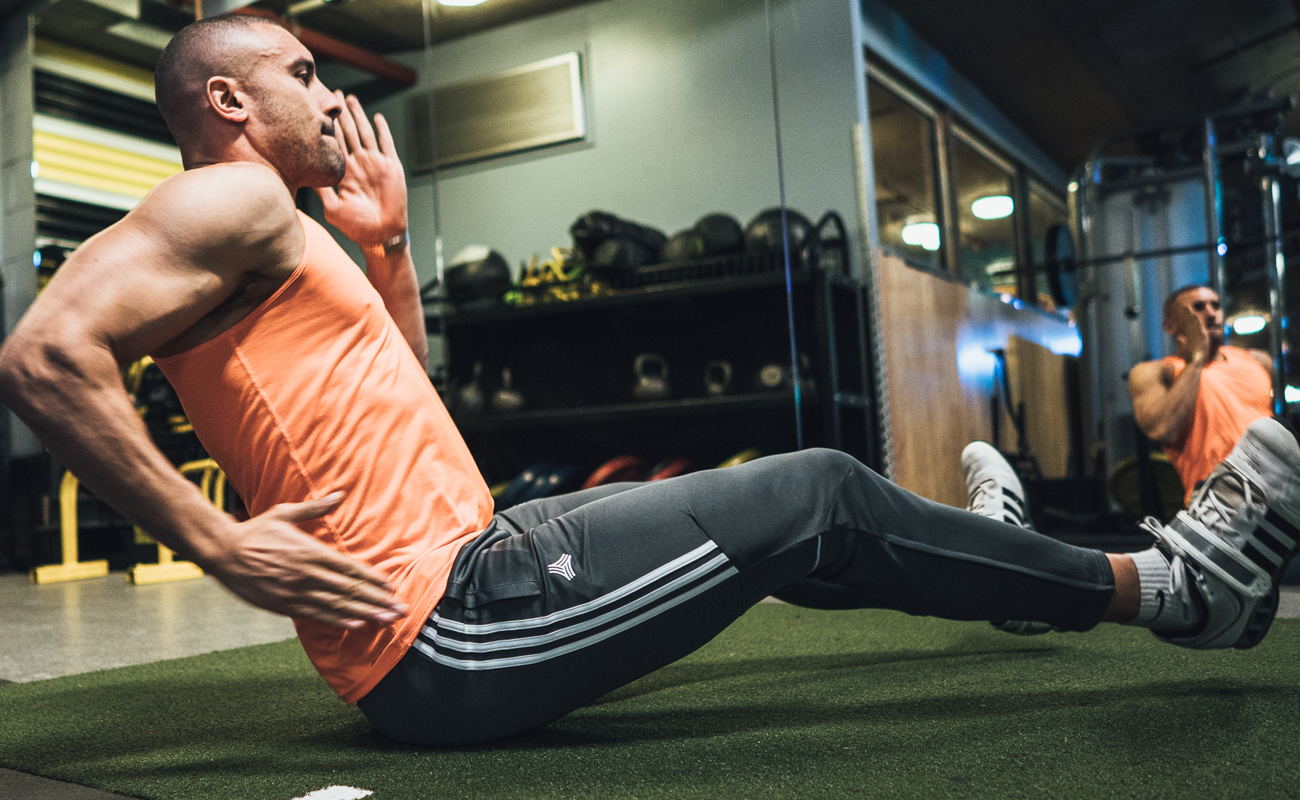How to train like a... Footballer
28th November
In the latest instalment of our sport-focused series ‘How to train…’, we sent Gymbox member Genevieve Teevan to learn from ex-professional footballer and Gymbox VPT Richie Byrne.
Until an injury put an end to his athletic career, Richie played professionally in the UK and represented his home country, Ireland, as a defender on the international squad. Before we address how football players train, he convinces me that footballers are among the fittest athletes on the planet. “They cover about 10 kilometres in the course of a 90-minute game – almost all of it at a sprint.”
What do you need to get fit enough for football? According to Richie, “Agility, endurance, repeated sprint ability, strength and power. There’s no aspect of fitness that can be neglected, but the key element is the capacity to go at all-out maximum speed for more than 30 metres at a time – over and over. That’s what happens every time a player runs to score or to make a save.”
“You need to train each area separately,” Richie says. “Plus, footballers need to train for symmetry, to correct imbalances of strength and flexibility that can lead to injuries.”
“But surely we could leave out strength training? Doesn’t too much muscle slow you down?” I ask.
Apparently not.
“More muscle means greater production of force fast, which is what you need to achieve explosive bursts of speed and to change direction quickly,” Richie says. “You’d have to be really big to get to a point of being so overloaded with muscle that it slows you down.”
There’s no short cut to training like a footballer, but Richie distils the key elements into an hour-long workout. He’s in the process of studying for a masters degree in strength and conditioning and there is a scientific explanation to go with each exercise. “While PAP (post activation potentiation) exercises, for example, like squats can make you better at jumping, there is no way to get better at sprinting without sprinting.”
 With that in mind, the warm-up focuses on “fast force production”. One of the most challenging (and ridiculous looking) exercises involves sitting on the ground with my legs stretched out in front of me, pumping my arms. The goal is to whip them fast enough to lift your arse off the floor. It’s not easy, even though I’m doing it for just 10-15 seconds at a time with a 45-second rest between sets.
With that in mind, the warm-up focuses on “fast force production”. One of the most challenging (and ridiculous looking) exercises involves sitting on the ground with my legs stretched out in front of me, pumping my arms. The goal is to whip them fast enough to lift your arse off the floor. It’s not easy, even though I’m doing it for just 10-15 seconds at a time with a 45-second rest between sets.
As we move through strength, aerobic and endurance exercises, Richie focuses on the biggest muscles: the glutes, then hamstrings and finally lats. We do deep goblet squats on a ramp with precise technical modifications to make sure my glutes are doing the work. He corrects my posture for Romanian single leg deadlift to achieve the maximum hamstring flex and perfect posterior chain alignment. Lat pull-downs work to build a stable core and back which is essential for football’s rapid stops and changes of direction.
A variation of pigeon pose not only works the hip flexors, but also stretches the nerves which, Richie tells me, can fail to catch up with growth. It feels like a workout with a physio tune-up session thrown in. He’s bursting with technical advice and suggestions for tests to find out exactly how I could improve aspects of fitness and performance. “I wish I knew at 18 what I know now. I’d have been a better player,” he says without bitterness.
Is he as fit now as when he was playing for a living? “Yes, in some ways I’m fitter,” he says. “Because you have more time for strength and recovery when you’re not facing a game every few days. Recovery is crucial.” That’s advice I’m happy to follow, along with the knowledge that you need to train smarter, not harder, to achieve a footballer’s agility and speed.
To train with Richie, email [email protected]